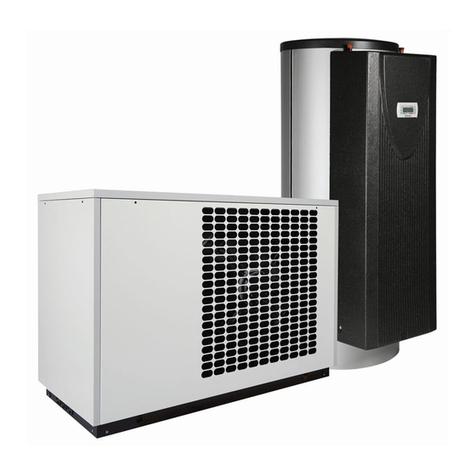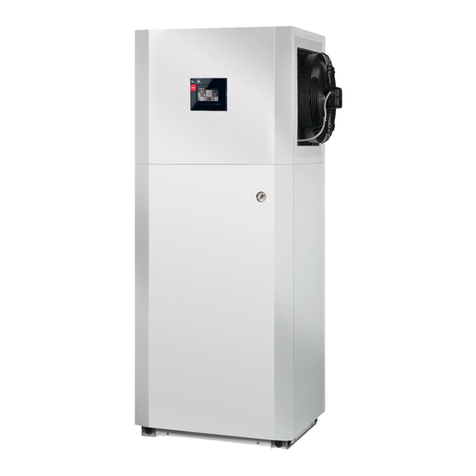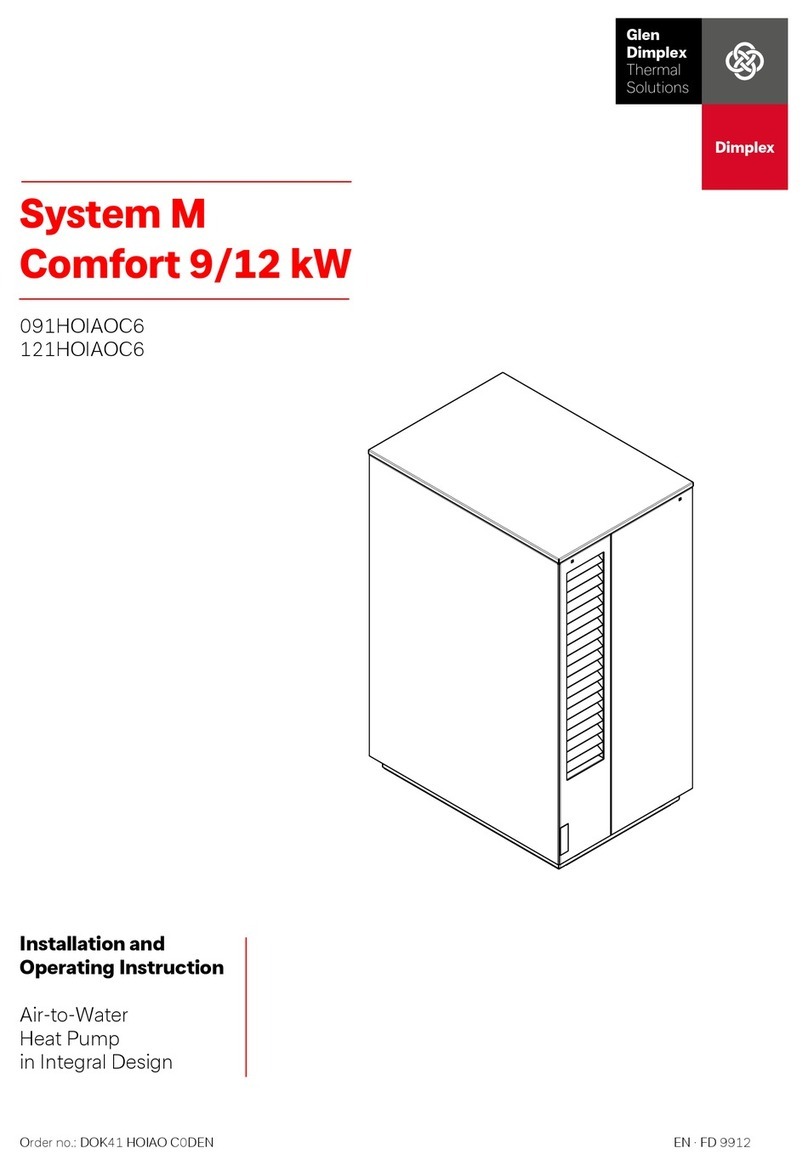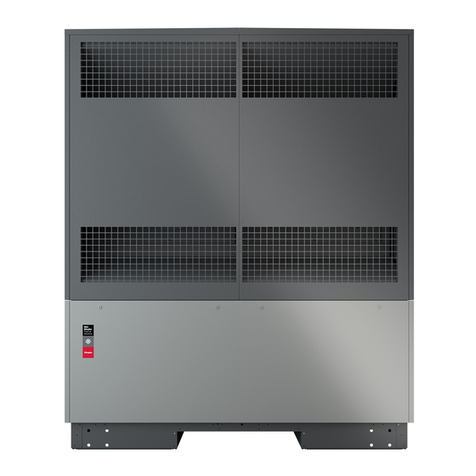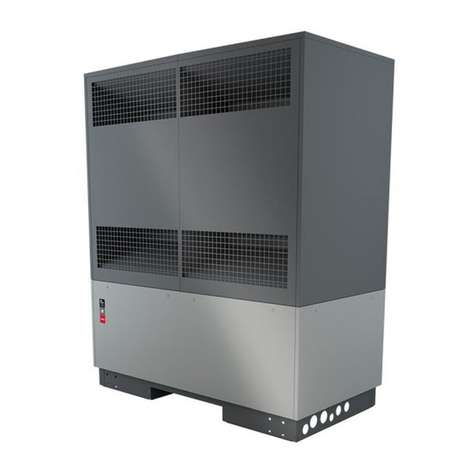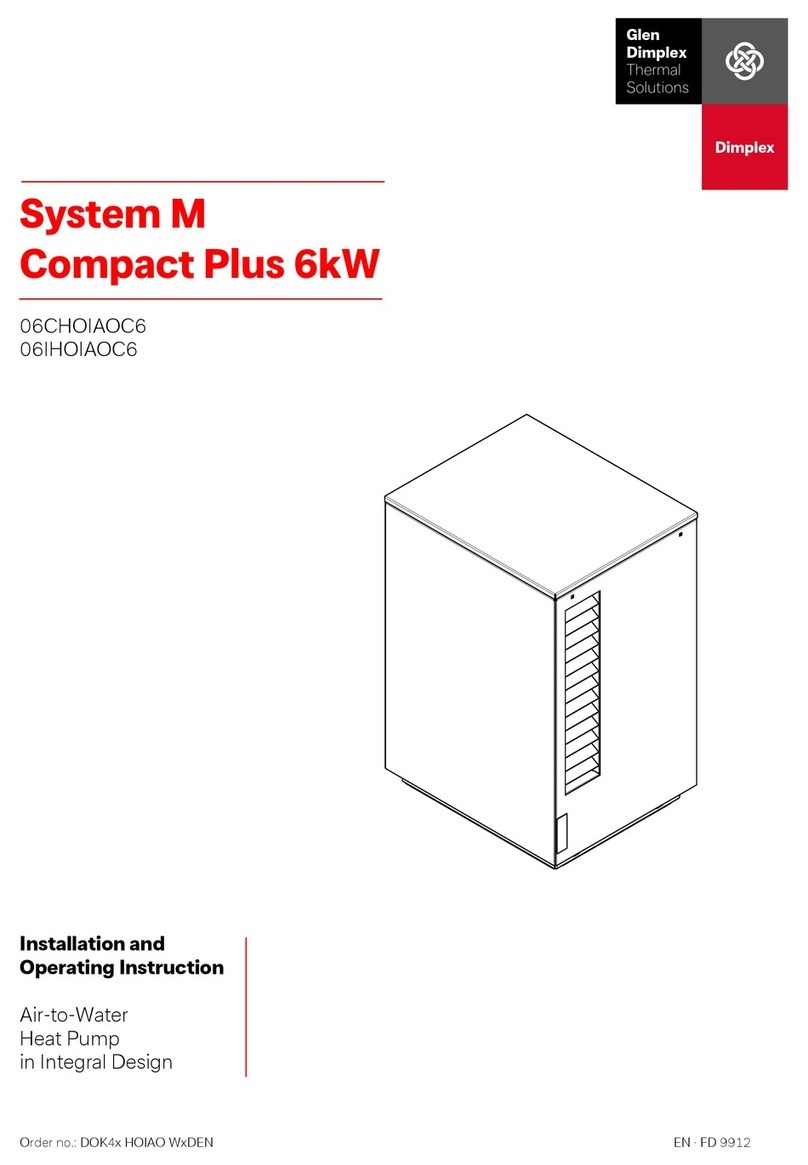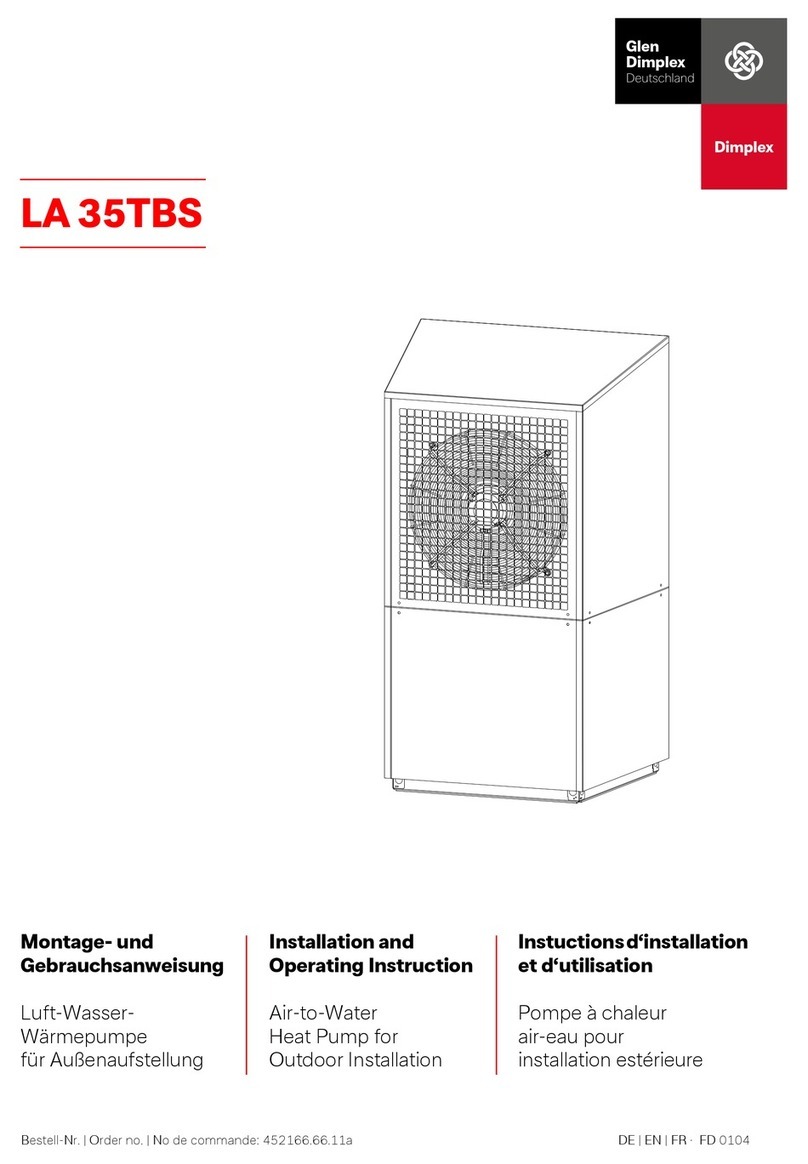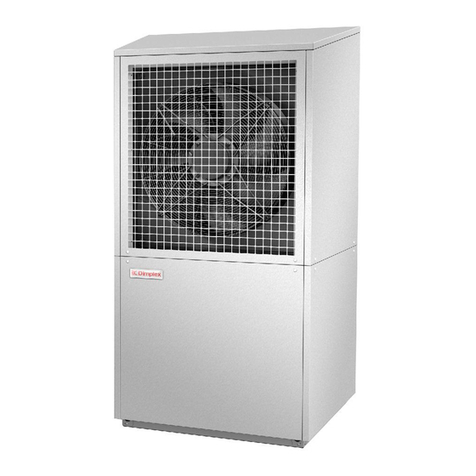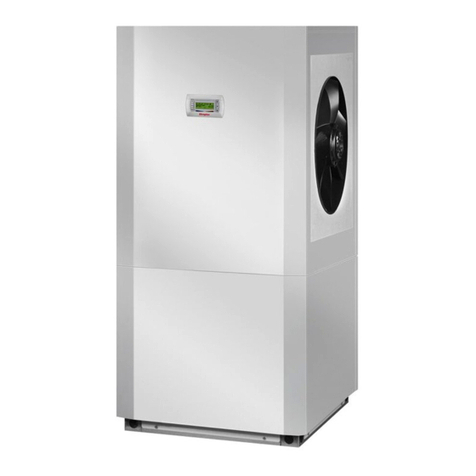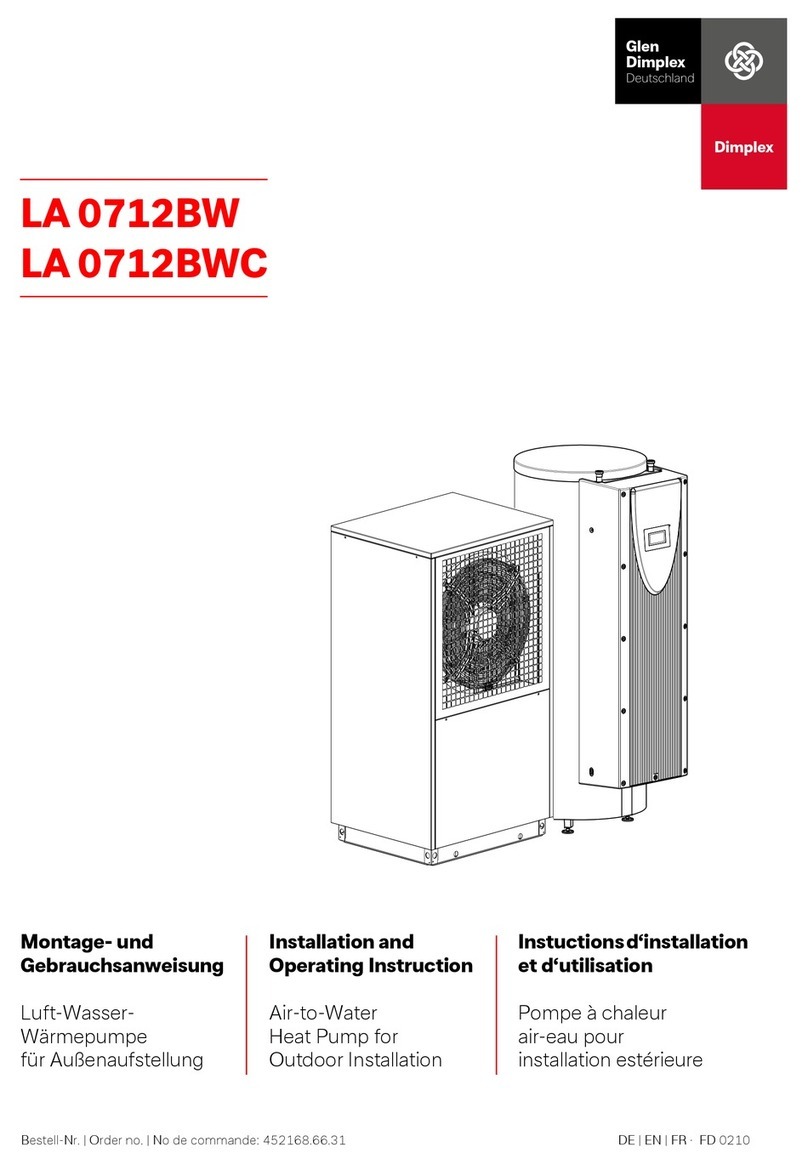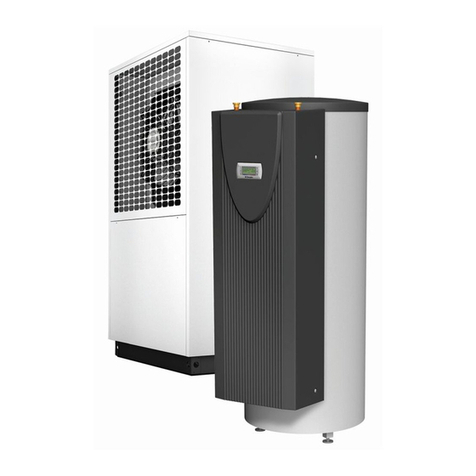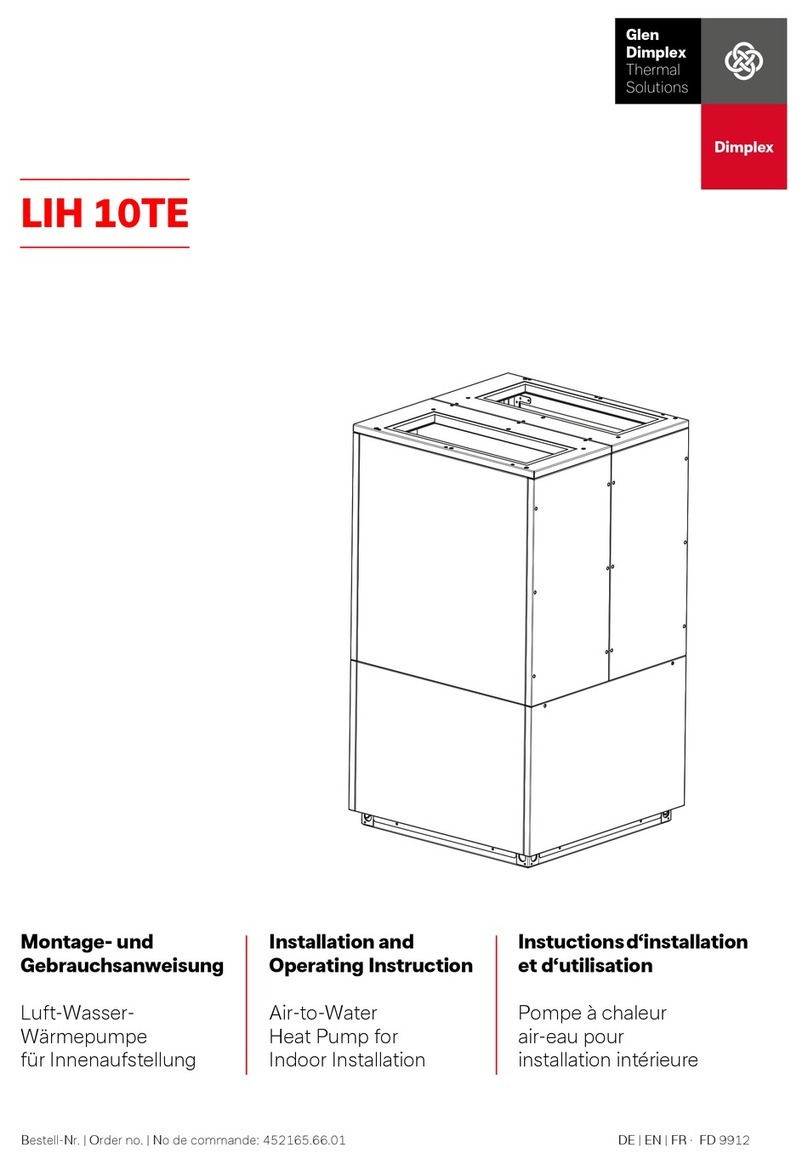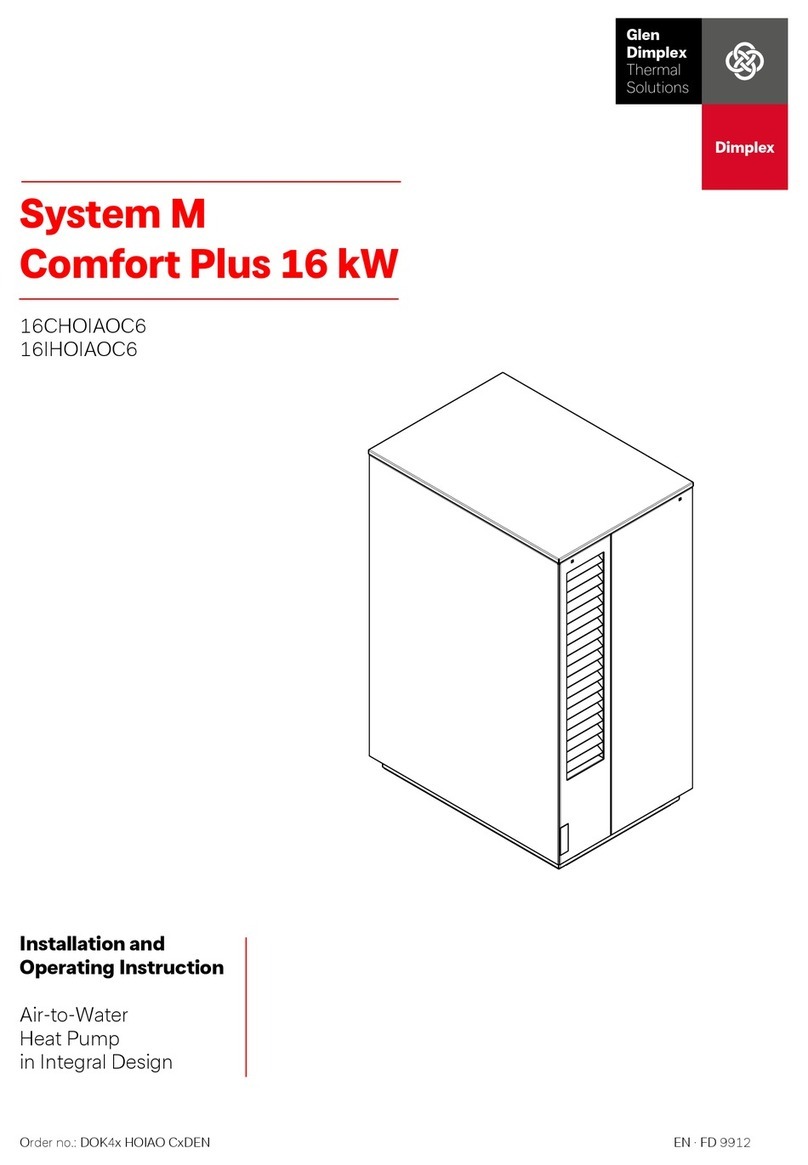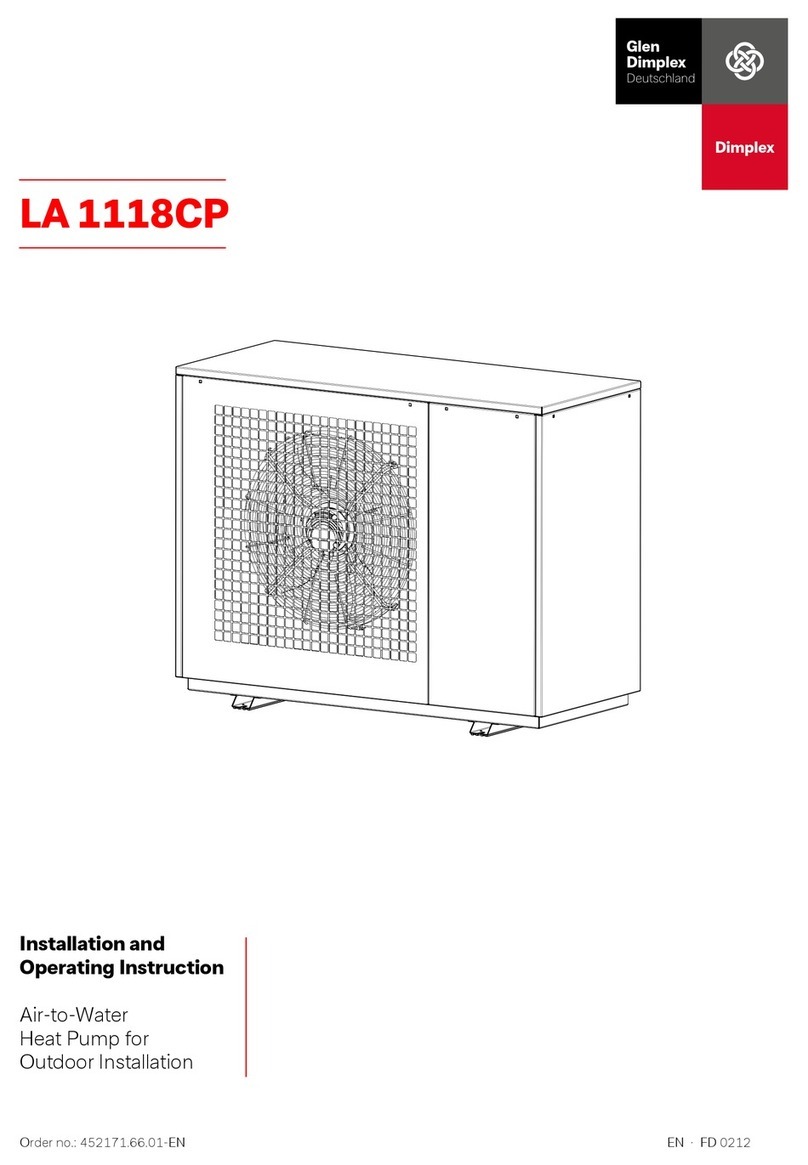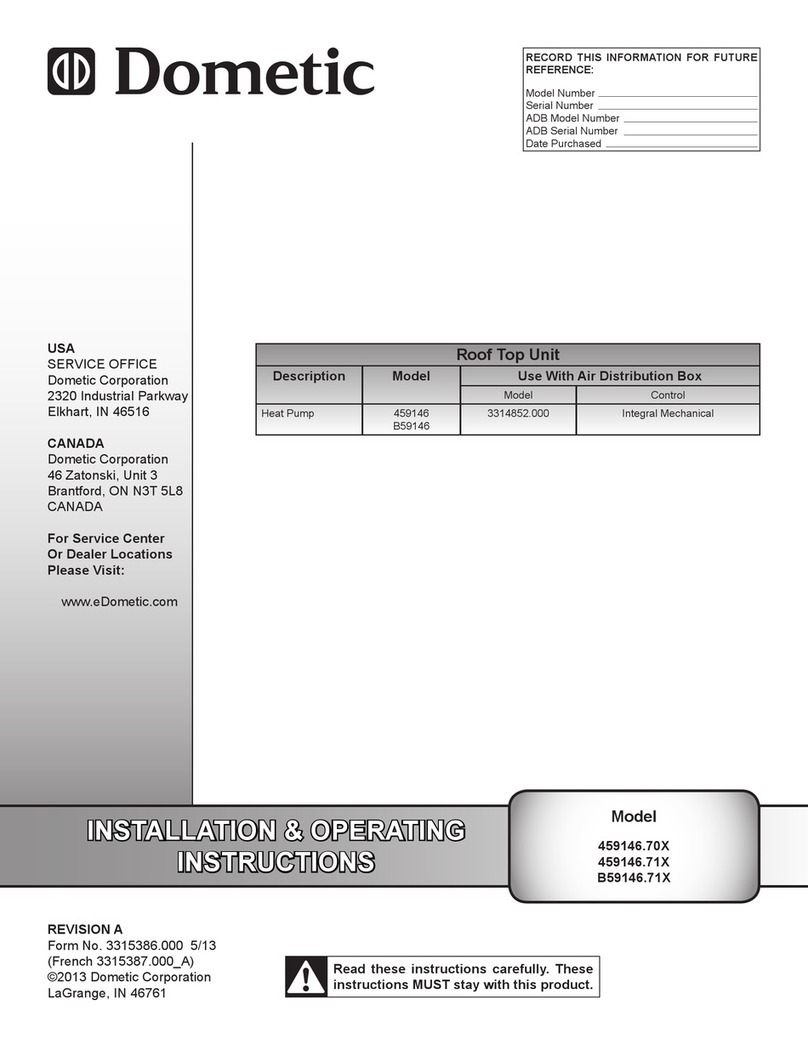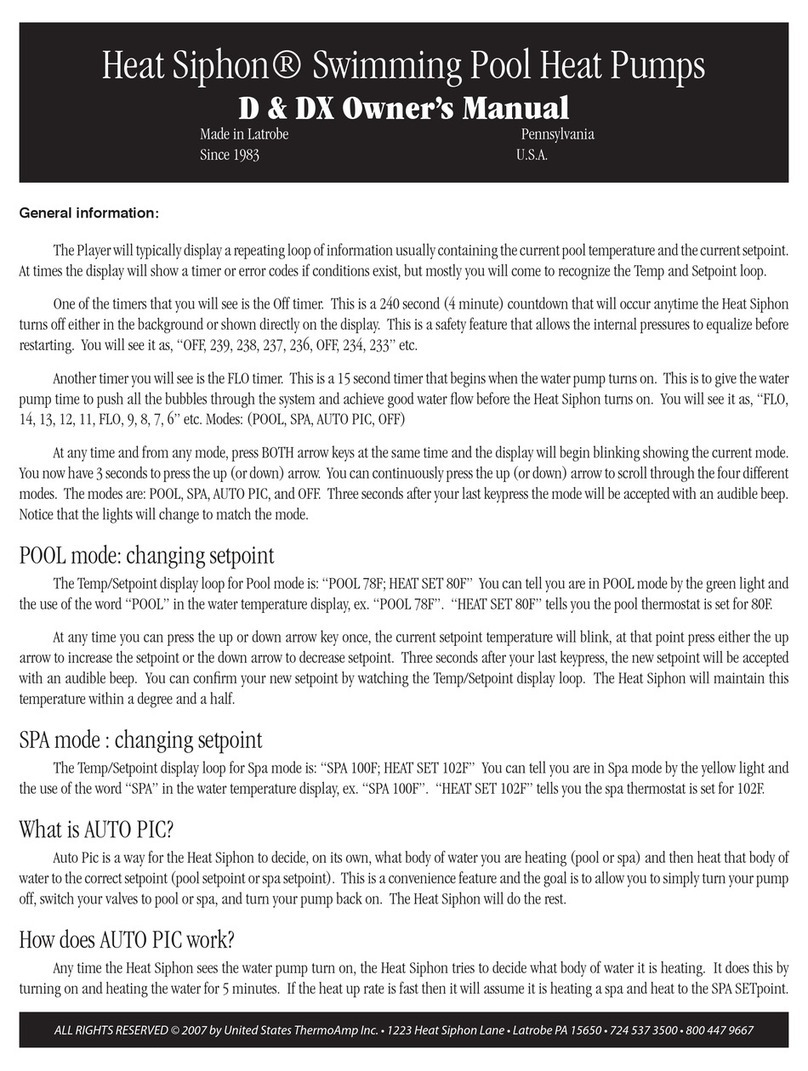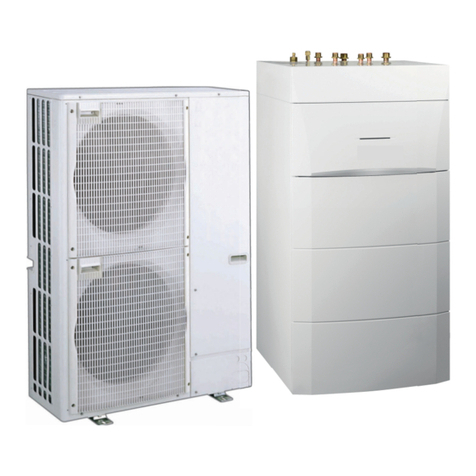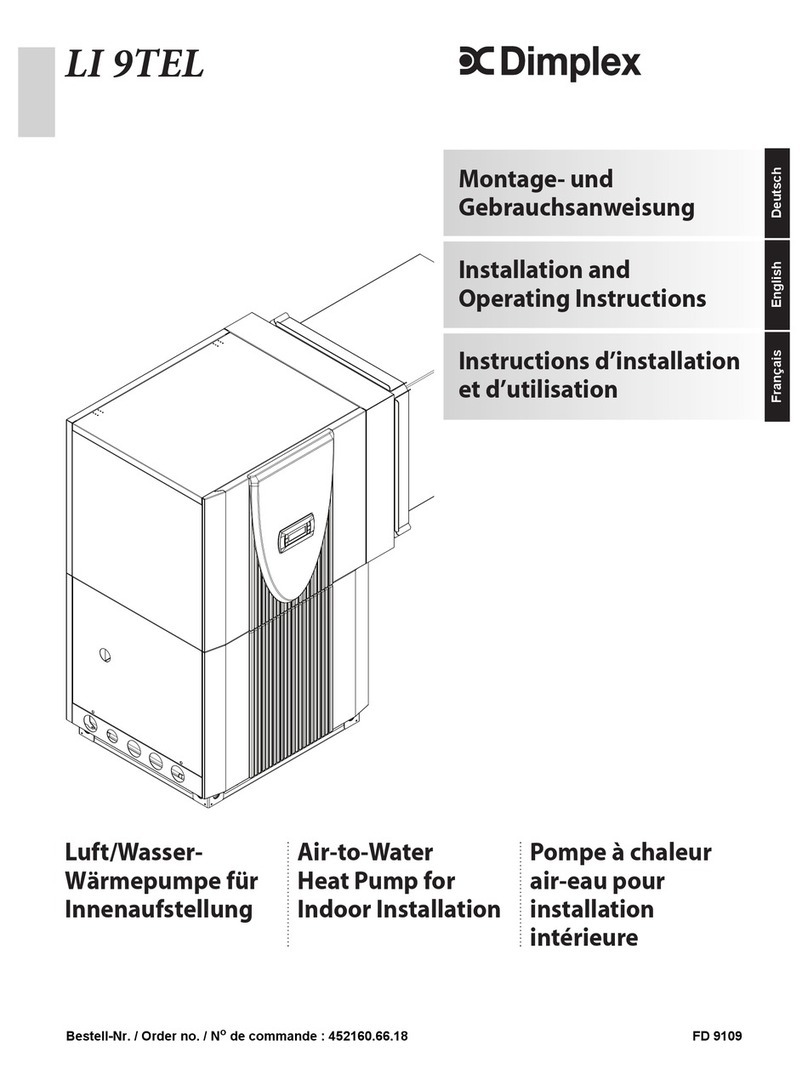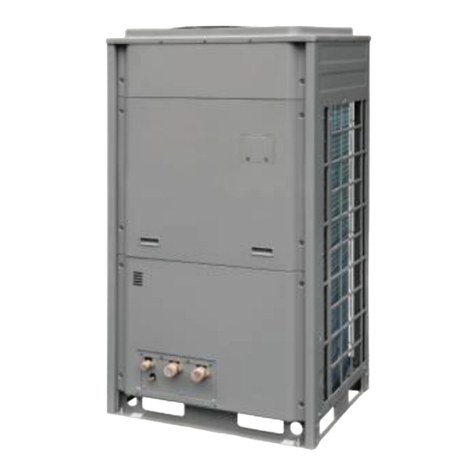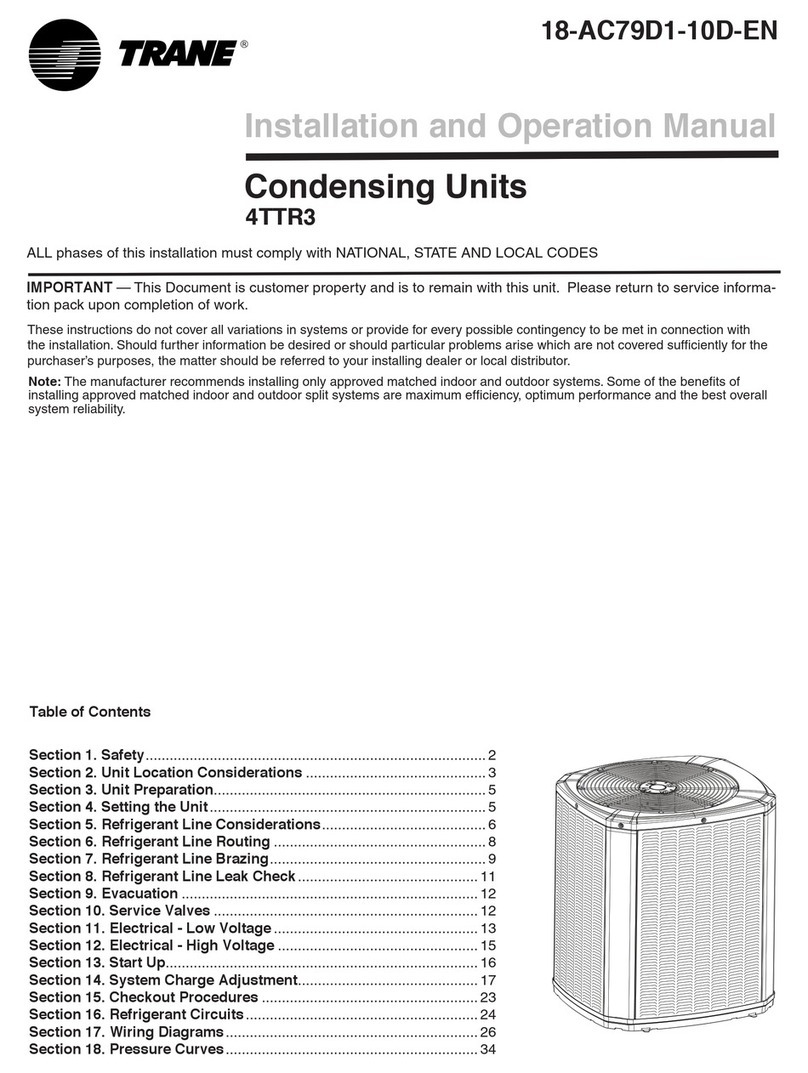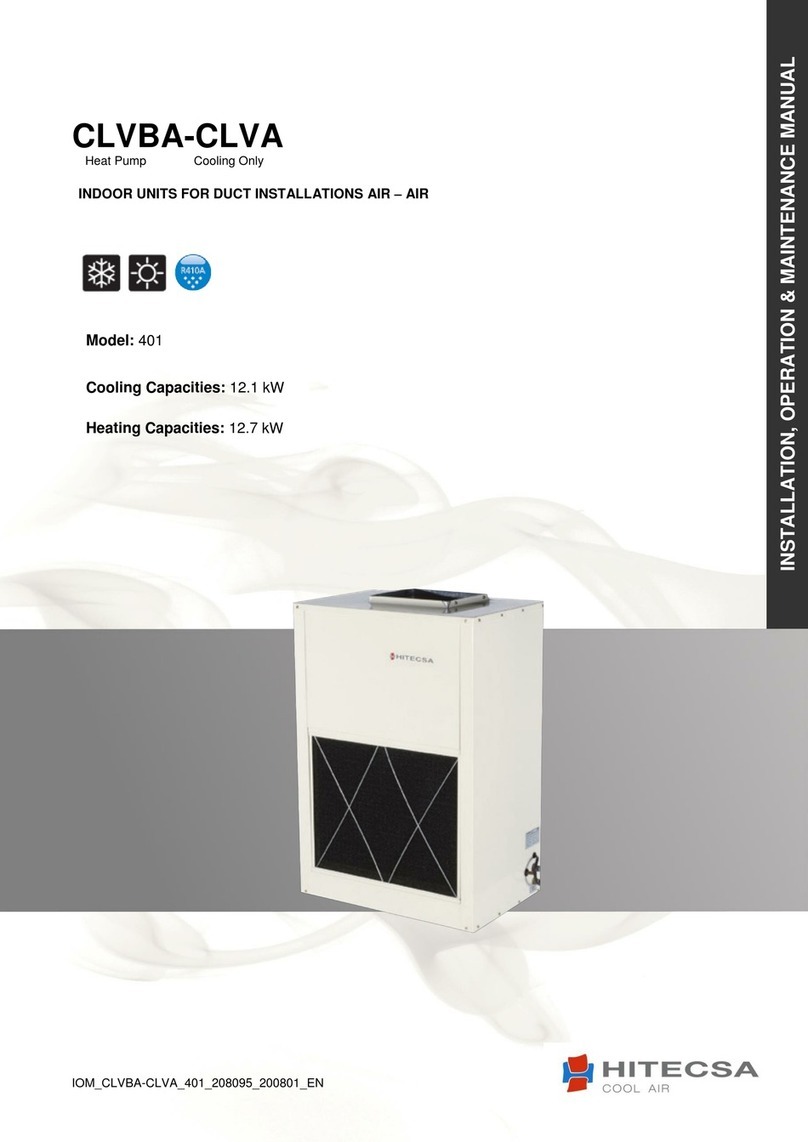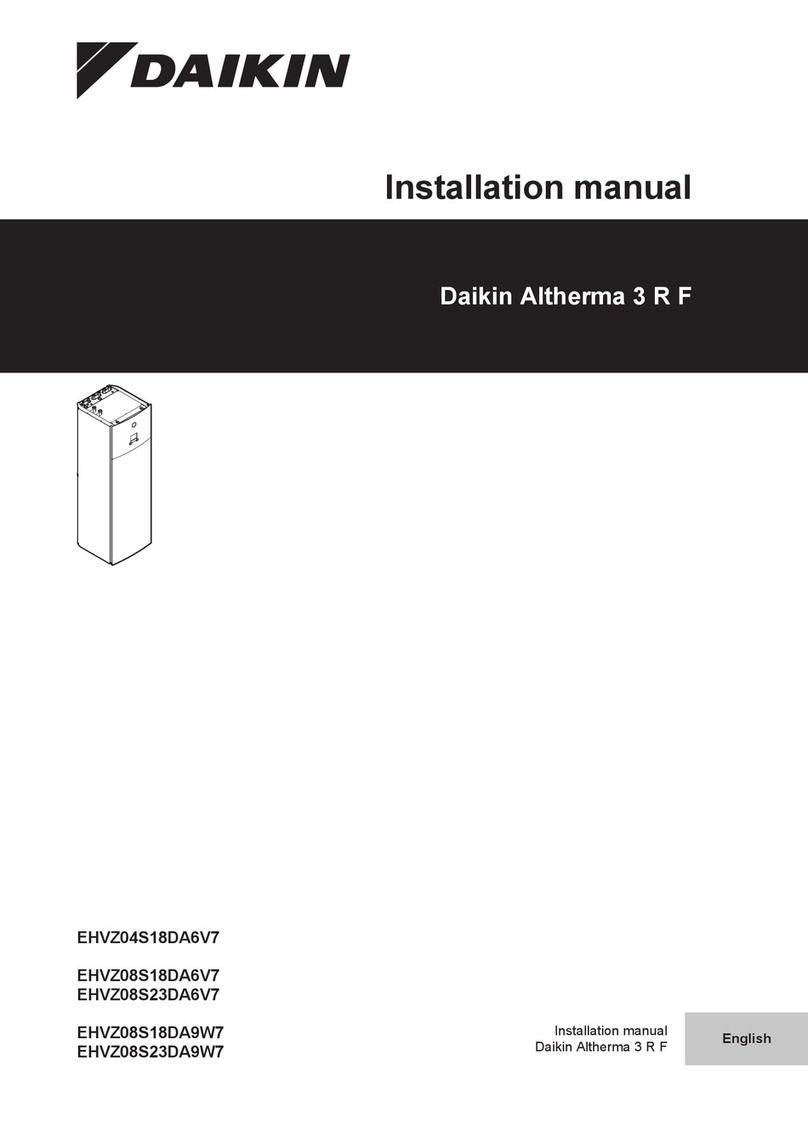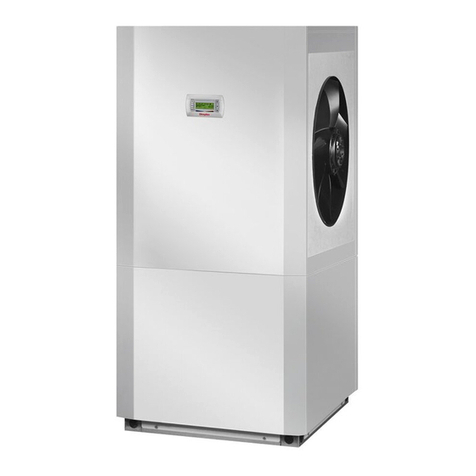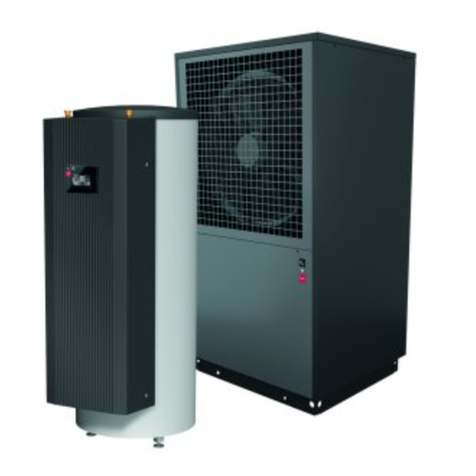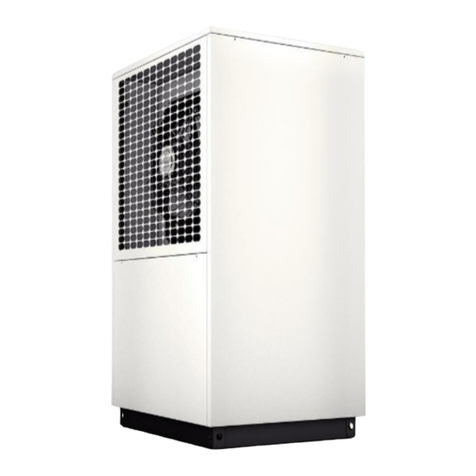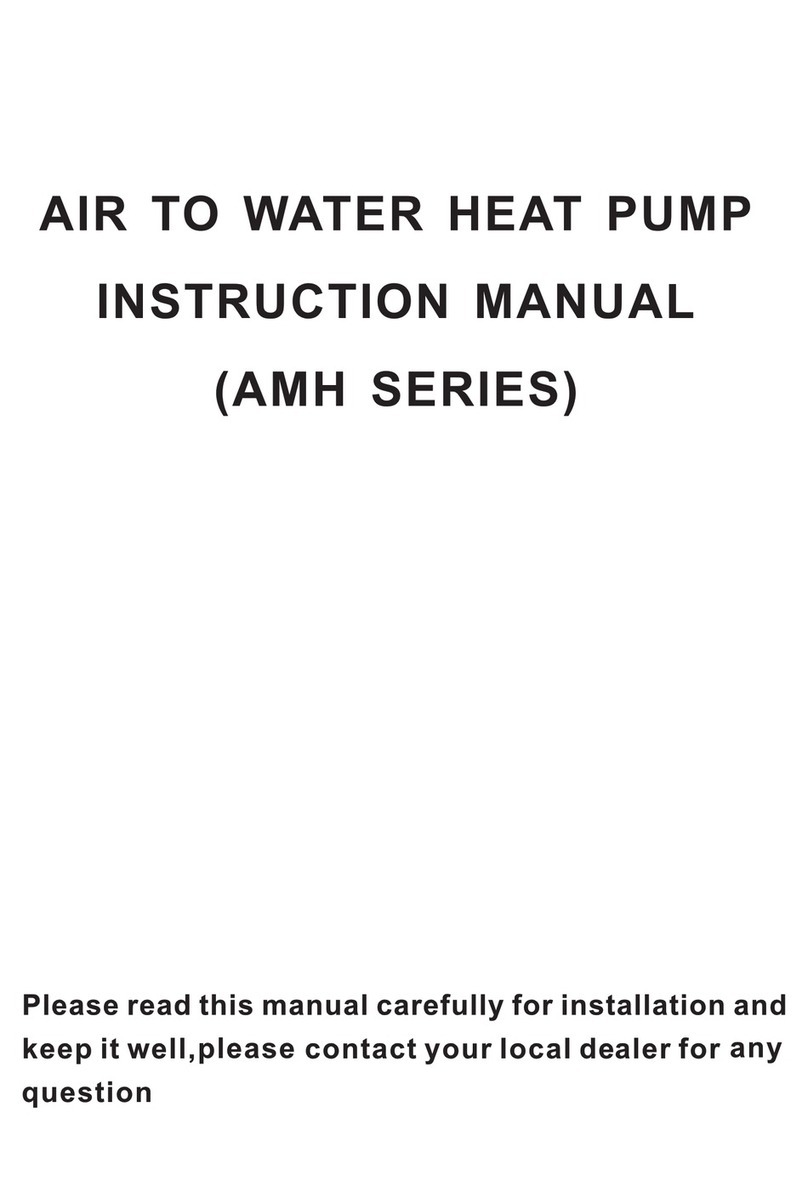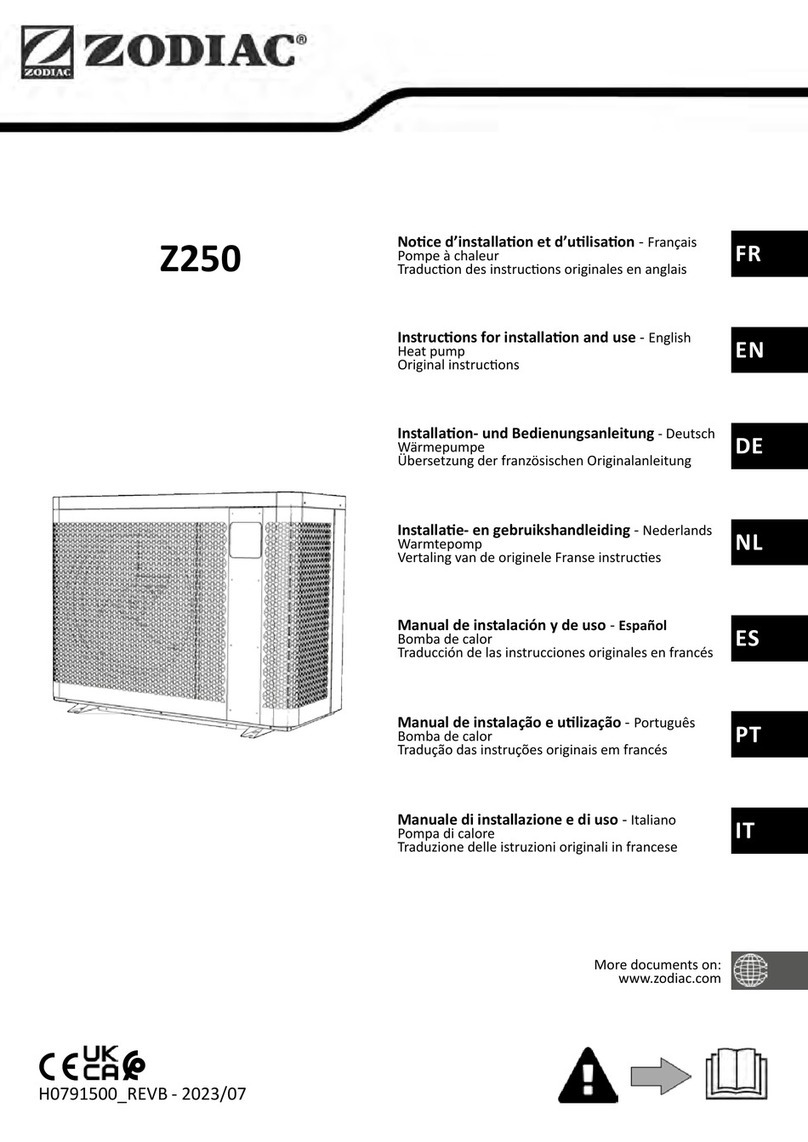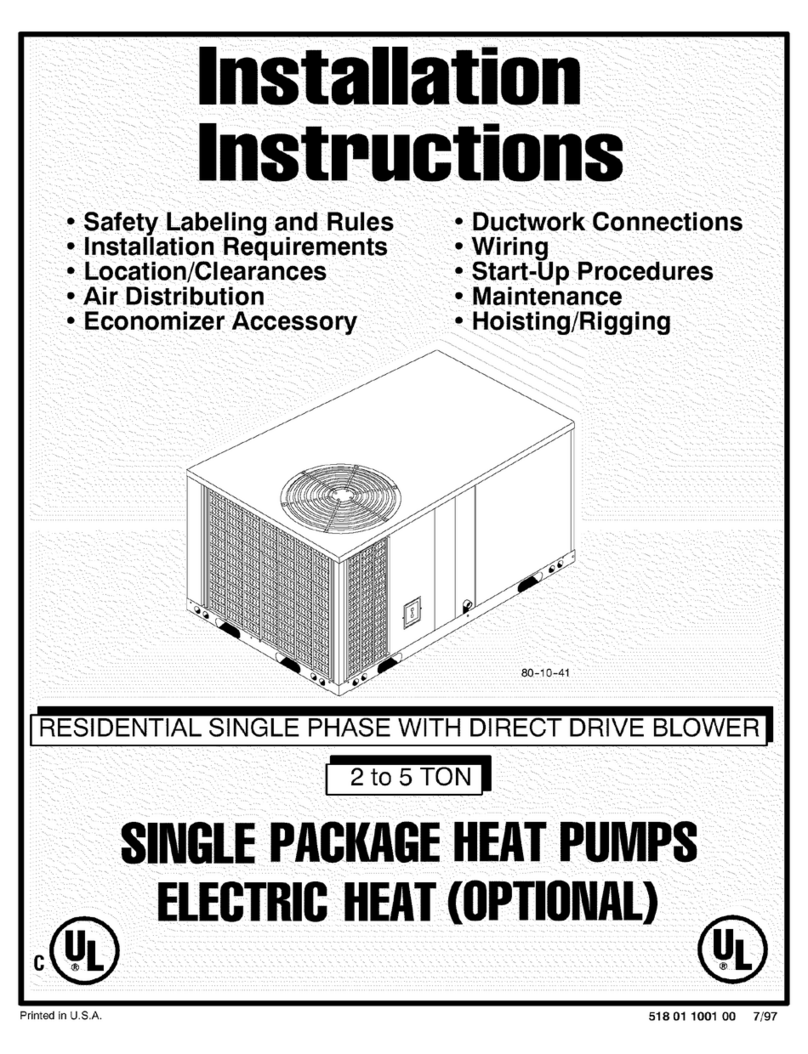
www.dimplex.de 452167.66.48-EN · FD 0305 EN-9
LA 3860 English
6.4 Electrical connection
3 lines/cables must be routed to the heat pump in total:
A standard 5-core cable is used to connect the heat pump
to the power supply.
The cable must be provided on-site. The conductor cross
section is selected in accordance with the power con-
sumption of the heat pump (see attachment Device Infor-
mation) and the applicable VDE (EN) and VNB regulations.
An all-pole disconnecting device with a contact gap of at
least 3 mm (e.g. utility blocking contactor or power contac-
tor) must be installed in the heat pump power supply. A 3-
pole circuit breaker with joint tripping of all outer conduc-
tors (trip current in accordance with device information)
provides the short circuit protection taking into account
the layout of the internal wiring.
The relevant components in the heat pump contain an in-
ternal overload protection.
When connecting, ensure that the incoming supply has a
clockwise rotating field.
Phase sequence: L1, L2, L3.
!
Ensure that there is a clockwise rotating field: With incorrect
wiring the starting of the heat pump is prevented. A
corresponding warning is indicated on the display of the heat
pump manager (adjust wiring).
The control voltage is supplied via the heat pump manager.
A 3-pole line must be laid for this in accordance with the
electrical documentation. Further information on the wir-
ing of the heat pump manager is available in the heat pump
manager operating instructions.
A shielded communication line (J-Y(ST)Y ..LG) (not in-
cluded in the scope of supply) connects the heat pump
manager with the refrigeration circuit control installed in
the heat pump. More detailed instructions can be found in
the heat pump manager operating instructions and in the
electrical documentation.
º
The communication cable is necessary for the function of
airto- water heat pumps in outdoor installation. It must be
shielded and laid separately from the mains cable.
6.4.1 Demand sensor connection
The demand sensor R2.2 (NTC 10) is included with the heat
pump manager. It must be installed depending on the hydrau-
lics used.
If a demand sensor is not connected, the second heat genera-
tor can not be controlled with the heat pump manager in the
event of an interruption in communication either.
º
The return sensor R2 installed in the heat pump is active when
the compressor is running and must not be disconnected.
º
Sensor cables can be extended up to 50 m with 2 x 0.75 mm
cables.
6.4.2 Circulating pump connection with
high performance
In many cases, the supply voltage of the pump is stuck on con-
tinuous current when using larger electronically controlled cir-
culating pumps (the manufacturer’s information on the pump
being used should be taken into consideration). The pump is
then generally actuated using the Start/Stop input. This input is
operated with extra low voltage from the pump (a link cable is
usually inserted in the factory default of the pump). In order to
be able to actuate the input, a coupling relay with a floating
contact is required. This must be controlled with the pump
function of a 230 V relay output of the controller. Due to the
extra low voltage to be switched, a suitable relay with the ap-
propriate contact material (gilded) must be selected and inte-
grated on-site.
6.4.3 Frost protection
Regardless of the settings for the heat circulating pumps, they
always run in heating, defrost and frost protection mode. In sys-
tems with multiple heating circuits, the 2nd and 3rd heat circu-
lating pump has the same function.
!
To ensure that the frost protection function on the heat pump
works properly, the heat pump manager must remain
connected to the power supply and flow must be maintained
through the heat pump at all times.
!
The primary pump (M11 – responsible for the heat source flow
rate) and the secondary pump (M16 – responsible for the
warm/cold water flow rate) must always be clamped to the
heat pump manager in all cases. This is the only way to ensure
the pump flows and returns necessary for operation and to
ensure that the necessary safety measures are in place.




















